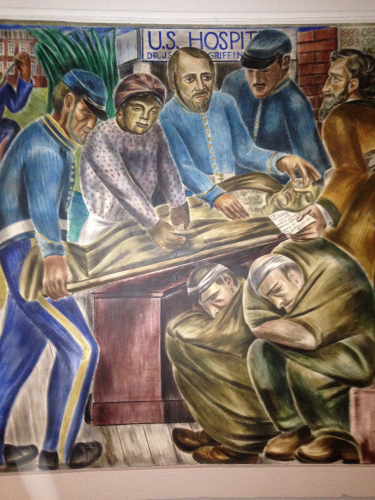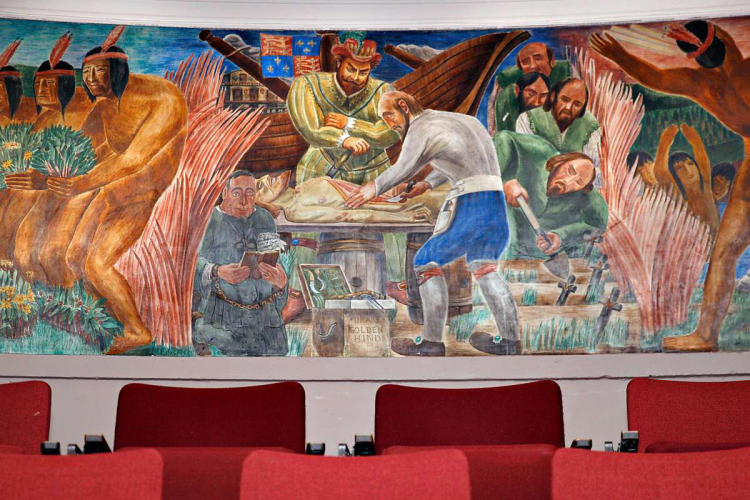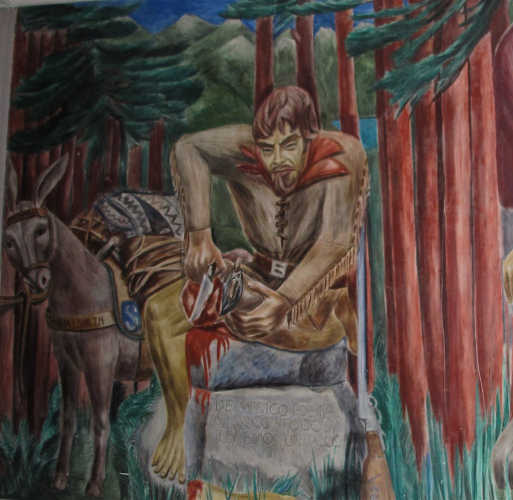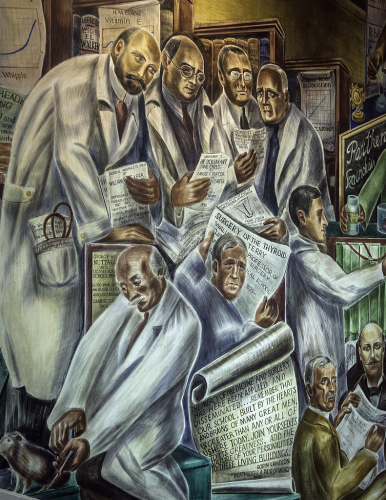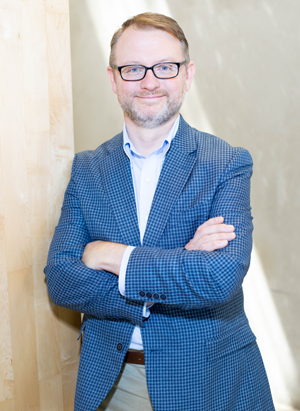From the Open-Publishing Calendar
From the Open-Publishing Newswire
Indybay Feature
CA Black History Under Attack By UCSF Execs, Bernard Zakheim’s Murals & “Biddy” Mason
This panel is about the threat to the Bernard Zakheim WPA UCSF Toland Hall murals which are threatened with destruction by the UCSF executives. These murals tell the story of a freed Black slave in California Bridget "Biddy" Mason who was a mid-wife.
University of California San Francisco executives are proposing the destruction of the historic Bernard Zakheim
WPA UCSF Toland Hall murals.
They include the history of medicine in California including the role of Bridget "Biddy” Mason who came to California as a slave and worked as a midwife in California.
She later became an important figure in Los Angeles and California history particularly for Black Californians.
Zakheim's murals at Coit Tower also came under attack and there was an effort to destroy them during the 1930’s because they included images of Karl Marx and the Daily Worker.
Nathan Zakheim, the son of Bernard Zakheim who worked on the UCSF murals talked about their construction and the reasons the University said they should be destroyed unless the family came up with $8 million.
Speakers in addition to Nathan Zackheim included Temi Washington – great great granddaughter of Bridget “Biddy” Mason, Lope Yap Jr. – Vice President GWHSAA, Adam Gottstein – a native San Franciscan
and the grandson of Bernard Zakheim, Dr. Robert Sherins the author of The Story Behind The Toland Hall Murals and Dr. Robert Cherny, author of Victor Arnautoff and the Politics of Art.
This panel was part of 2020 Laborfest.net and was held on July 25, 2020.
Additional media:
History of Medicine in California Articulated in Frescoes
The Story Behind the Murals of Toland Hall, UCSF
http://robertssherinsmd.com/files/books/7-Toland%20Manuscript.4.pdf
UCSF Toland Hall Bernard Zakheim mural tour by Chauncey Leake
https://archive.org/details/cum_000015
San Francisco university in talks with US government about preserving New Deal-era murals slated for destruction
https://www.theartnewspaper.com/news/san-francisco-university-in-talks-with-us-government-about-preserving-new-deal-era-murals-slated-for-destruction?fbclid=IwAR12UWwksSyYJh08fwOizcpVKEhDTfFSUuEpOSstpfewdgLrvvf5lGUC9Eo
The Biddy Mason Story
https://youtu.be/uvlXfCuCVAY
Bridget "Biddy" Mason (U.S. National Park Service)
https://www.nps.gov/people/biddymason.htm
LaborFest.net
Production of Labor Video Project
http://www.laborvideo.org
Biddy Mason is my ancestor. We need to save a historical mural that depicts her
https://www.latimes.com/opinion/story/2020-07-16/biddy-mason-is-my-ancestor-save-mural-ucsf
A construction project is threatening a UC San Francisco mural of Biddy Mason.(Los Angeles Times)
JULY 16, 20203 AM
To the editor: I am the great-great-granddaughter of Biddy Mason, the famous African American freedwoman depicted in a mural at UC San Francisco that now faces destruction.
When I look at this mural depicting my revered ancestor as the central figure, my senses are overcome with emotion. Her story and passionate mission to heal the sick are shown in the mural as she “lays hands” on a malaria-infected patient.
In the Black church, the “laying of hands” upon a person is done only by a qualified leader. It’s a sacred act of blessing and healing and considered a gift. Her medical knowledge and healing hands are met with hope and trust, which is shown on the faces of the men surrounding her in the mural.
It deeply saddens me to hear that the earliest known artistic depiction of my great-great-grandmother may soon be destroyed. Given the recent demands for a fuller accounting and understanding of Black history, it’s more important than ever that we fight to preserve this mural and all it represents. It is Black history.
UCSF Development Puts UCSF Zakheim Murals at Risk
July 10, 2020
Ruth Gottstein, the artist’s daughter—Zakheim’s mural at Coit Tower depicts Ruth wearing a sailor suit.
Ruth Gottstein, the artist’s daughter
Zakheim’s mural at Coit Tower depicts Ruth wearing a sailor suit.
My grandfather, Bernard Zakheim, was a seminal figure in the New Deal art world. He immigrated from Warsaw to New York in 1920, then made his way to San Francisco.
In the mid-1930s, Bernard coordinated the twenty-five muralists who created frescoes in San Francisco’s landmark Coit Tower. This was the largest of many endeavors sponsored by the Public Works of Art Project (PWAP), which later became the Federal Art Project (FAP) that employed struggling artists nationwide during the Great Depression.
The Coit Tower murals, conceptualized by Zakheim, depict various scenes of life in California. Bernard’s fresco, “The Library,” shows a man removing a book by Karl Marx from a shelf. The mural includes an image of the artist’s daughter—my mother, Ruth, as a 12-year-old, wearing a blue-and-white sailor suit. At 97, she still tells the story of when she stood on Market Street with her father and witnessed striking dock workers in the days leading up to the San Francisco General Strike of 1934. The strike inspired some Coit Tower artists to include themes of labor unrest and economic inequity in the murals they painted there.
In 1935, the Works Progress Administration (WPA) commissioned Zakheim to paint a series of frescoes at the University of California San Francisco (UCSF). The eleven panels in Toland Hall graphically depict the evolution of medicine in California. Among the historical figures are Bridget “Biddy” Mason, a former slave who became a nurse, assisting Dr. John S. Griffin, one of California’s earliest trained physicians, in the treatment of a malaria patient.
Zackheim Murals—Bridget “Biddy” Mason, a former slave who became a nurse, assists Dr. John S. Griffin in the treatment of a malaria patient.
Zakheim Murals at Toland Hall, UCSF
Bridget “Biddy” Mason, a former slave who became a nurse, assists Dr. John S. Griffin.
Photo Credit: Barbara Bernstein, New Deal Art Registry
The colossal undertaking of these Toland Hall murals may soon be undone as plans proceed to tear down the old hospital to make way for a new facility. The potential destruction of these murals comes amid assaults on other New Deal artworks when there is a change to the public spaces they embellish, or when controversy arises regarding their content. For instance, the threatened destruction of “The Life of Washington,” at George Washington High School by muralist Victor Arnautoff, also a WPA artist at Coit Tower, galvanized San Francisco’s arts community.
Bernard’s work has been threatened before: with neglect, water damage, political controversy and censorship. As an example, the lower half of a 1930s-era fresco he painted at the Alemany Emergency Hospital and Health Center in San Francisco was painted over in the 1950s. The fresco was saved six decades later when his son, Nathan Zakheim, expertly removed the paint.
Even the Coit Tower murals, a major city attraction, were neglected for years. Legislation approved by the voters saved the murals and upgraded the building.
From both an artistic and historical perspective, the Toland Hall murals are irreplaceable. Like many New Deal works, they are a window on the past. Importantly, they are remnants of an era when government exalted and funded the arts. Given this most recent threat, another rescue campaign is underway. As a family, we continue to do all we can to ensure the murals’ survival so that future generations can appreciate and learn from them.
A monument to California’s Black history — and a great work of art — may soon be destroyed at UCSF
https://www.latimes.com/opinion/story/2020-07-10/op-ed-a-monument-to-californias-black-history-and-a-great-work-of-art-may-soon-be-destroyed
Artist Bernard Zakheim showed African American Biddy Mason as an equal among medical authorities in a mural commissioned by UC San Francisco in the 1930s. (Chris Carlsson)
By JACKIE BROXTON AND KEVIN WAITE
JULY 10, 20203:18 AM
As antiracist activists topple statues of slaveholders across the country, UC San Francisco threatens to demolish a very different kind of monument: a mural depicting a celebrated former slave.
The work shows Biddy Mason, an African American midwife who rose to fortune in Los Angeles after winning her freedom in the mid-1850s. Since the Great Depression, the mural has been displayed alongside nine others in UC Hall on the university’s main campus. But now the building and its artwork are slated for demolition to make way for new office, medical and research space.
In the mid-1930s, UC San Francisco commissioned the Polish-born artist Bernard Zakheim to paint a set of murals of California’s medical history. Zakheim, who studied with Diego Rivera, had become regarded as one of the state’s major artistic figures. Like his murals in San Francisco’s Coit Tower, his UC San Francisco works are landmarks in the bold, modern style of the New Deal era. They have been hailedas “the jewel of the University’s art collection.”
The panel featuring Biddy Mason is perhaps the most historically significant of the 10 murals. In it, Mason tends to a malaria patient alongside Dr. John Griffin, one of Los Angeles’ preeminent early medical authorities. Below, other patients await treatment from Griffin and Mason, who formed a renowned medical partnership in mid-19th century Los Angeles.
What makes the mural unique is its composition. Mason occupies center stage. She’s surrounded by a group of white men — soldiers, patients, doctors, city officials — but she’s not subordinate to them. Rather, she tends to the patient directly as a medical authority in her own right. Zakheim depicts Mason as she was: a healing presence and a pillar of early Los Angeles.
Biddy Mason began her days in radically different circumstances. Born into slavery in the Georgia cotton belt in 1818, she was seemingly destined for a life of hard labor and a death in obscurity. Like other enslaved African Americans, she lacked a legal family name. She was simply Bridget, or Biddy.
In the late 1840s, Biddy began a long, strange trip — one that took her out of the South and across the continent. She went as a slave, forcibly transported by her master, along with several other Black women and children. They arrived first in Utah before moving to a small Mormon colony in San Bernardino, Calif., in 1851.
Although California was technically a free state, authorities turned a blind eye to slaveholding settlers in their midst. Several dozen slaves worked in San Bernardino alone. Only in 1856 — six years after California outlawed human bondage — did Biddy, along with 13 other African American women and children, win their freedom in a Los Angeles courtroom.
Once free, Biddy took the last name Mason and began an improbable rise through the social ranks of early Los Angeles. She used money earned as Dr. Griffin’s assistant to invest in real estate, just as L.A. was beginning to boom. Although illiterate and subject to both racial and gender discrimination, Mason amassed a tremendous fortune. Some estimates place her total wealth at $300,000 (equivalent to $8.5 million today).
Mason is remembered not only for her uncanny business acumen, but also for her philanthropy. She gave liberally — of her time, money and medical expertise — to those in need around Los Angeles. She also co-founded the first African American house of worship in the city. First African Methodist Episcopal Church remains a mainstay of L.A.’s Black community to this day.
Now, a piece of Mason’s legacy — the oldest known artistic representation of the famous freedwoman — faces demolition.
University spokespeople claim that UC San Francisco is unable to cover the costs of removing and preserving the murals, estimated at $8 million. If the price of saving 10 frescoes is prohibitive, one wonders where the university will find the funds for its proposed 1.5 million-square-foot expansion project. Perhaps the university could start by dipping into its nearly $4-billion endowment.
Local residents have already begun to protest the development project, set to break ground in 2023. They argue that the expansion will add thousands of workers to the Parnassus Heights campus, further straining the community’s overtaxed transit systems and housing options. Critics can add the university’s destruction of history to their list of grievances.
The artist’s son, Nathan Zakheim, has been given three months to propose a plan to remove the murals at the family’s expense. After that, the university will solicit proposals from the public to adopt the murals — again without financial support from UC San Francisco. If no one comes forward: demolition.
UC San Francisco proposes a Silicon Valley solution: a digital re-creation of the murals, which would later be featured in a virtual reality display. Through goggles, visitors would get a secondhand look at art destroyed by the university.
The timing could not be worse. During a crossroads in race relations, when Black American voices are finding new purchase, the university threatens an important piece of Black women’s history.
The United States boasts vanishingly few monuments to women of color. Fewer still if the university is allowed to go forward with its ill-considered plans to bulldoze the Biddy Mason mural along with nine others. Black Lives Matter. And so does Black history.
Jackie Broxton is the executive director of the Biddy Mason Charitable Foundation,which provides services and support to L.A.’s foster youth population. Kevin Waite is an assistant professor of history at Durham University and co-director of an National Endowment for the Humanities-funded project on the life and times of Biddy Mason.
WPA UCSF Toland Hall murals.
They include the history of medicine in California including the role of Bridget "Biddy” Mason who came to California as a slave and worked as a midwife in California.
She later became an important figure in Los Angeles and California history particularly for Black Californians.
Zakheim's murals at Coit Tower also came under attack and there was an effort to destroy them during the 1930’s because they included images of Karl Marx and the Daily Worker.
Nathan Zakheim, the son of Bernard Zakheim who worked on the UCSF murals talked about their construction and the reasons the University said they should be destroyed unless the family came up with $8 million.
Speakers in addition to Nathan Zackheim included Temi Washington – great great granddaughter of Bridget “Biddy” Mason, Lope Yap Jr. – Vice President GWHSAA, Adam Gottstein – a native San Franciscan
and the grandson of Bernard Zakheim, Dr. Robert Sherins the author of The Story Behind The Toland Hall Murals and Dr. Robert Cherny, author of Victor Arnautoff and the Politics of Art.
This panel was part of 2020 Laborfest.net and was held on July 25, 2020.
Additional media:
History of Medicine in California Articulated in Frescoes
The Story Behind the Murals of Toland Hall, UCSF
http://robertssherinsmd.com/files/books/7-Toland%20Manuscript.4.pdf
UCSF Toland Hall Bernard Zakheim mural tour by Chauncey Leake
https://archive.org/details/cum_000015
San Francisco university in talks with US government about preserving New Deal-era murals slated for destruction
https://www.theartnewspaper.com/news/san-francisco-university-in-talks-with-us-government-about-preserving-new-deal-era-murals-slated-for-destruction?fbclid=IwAR12UWwksSyYJh08fwOizcpVKEhDTfFSUuEpOSstpfewdgLrvvf5lGUC9Eo
The Biddy Mason Story
https://youtu.be/uvlXfCuCVAY
Bridget "Biddy" Mason (U.S. National Park Service)
https://www.nps.gov/people/biddymason.htm
LaborFest.net
Production of Labor Video Project
http://www.laborvideo.org
Biddy Mason is my ancestor. We need to save a historical mural that depicts her
https://www.latimes.com/opinion/story/2020-07-16/biddy-mason-is-my-ancestor-save-mural-ucsf
A construction project is threatening a UC San Francisco mural of Biddy Mason.(Los Angeles Times)
JULY 16, 20203 AM
To the editor: I am the great-great-granddaughter of Biddy Mason, the famous African American freedwoman depicted in a mural at UC San Francisco that now faces destruction.
When I look at this mural depicting my revered ancestor as the central figure, my senses are overcome with emotion. Her story and passionate mission to heal the sick are shown in the mural as she “lays hands” on a malaria-infected patient.
In the Black church, the “laying of hands” upon a person is done only by a qualified leader. It’s a sacred act of blessing and healing and considered a gift. Her medical knowledge and healing hands are met with hope and trust, which is shown on the faces of the men surrounding her in the mural.
It deeply saddens me to hear that the earliest known artistic depiction of my great-great-grandmother may soon be destroyed. Given the recent demands for a fuller accounting and understanding of Black history, it’s more important than ever that we fight to preserve this mural and all it represents. It is Black history.
UCSF Development Puts UCSF Zakheim Murals at Risk
July 10, 2020
Ruth Gottstein, the artist’s daughter—Zakheim’s mural at Coit Tower depicts Ruth wearing a sailor suit.
Ruth Gottstein, the artist’s daughter
Zakheim’s mural at Coit Tower depicts Ruth wearing a sailor suit.
My grandfather, Bernard Zakheim, was a seminal figure in the New Deal art world. He immigrated from Warsaw to New York in 1920, then made his way to San Francisco.
In the mid-1930s, Bernard coordinated the twenty-five muralists who created frescoes in San Francisco’s landmark Coit Tower. This was the largest of many endeavors sponsored by the Public Works of Art Project (PWAP), which later became the Federal Art Project (FAP) that employed struggling artists nationwide during the Great Depression.
The Coit Tower murals, conceptualized by Zakheim, depict various scenes of life in California. Bernard’s fresco, “The Library,” shows a man removing a book by Karl Marx from a shelf. The mural includes an image of the artist’s daughter—my mother, Ruth, as a 12-year-old, wearing a blue-and-white sailor suit. At 97, she still tells the story of when she stood on Market Street with her father and witnessed striking dock workers in the days leading up to the San Francisco General Strike of 1934. The strike inspired some Coit Tower artists to include themes of labor unrest and economic inequity in the murals they painted there.
In 1935, the Works Progress Administration (WPA) commissioned Zakheim to paint a series of frescoes at the University of California San Francisco (UCSF). The eleven panels in Toland Hall graphically depict the evolution of medicine in California. Among the historical figures are Bridget “Biddy” Mason, a former slave who became a nurse, assisting Dr. John S. Griffin, one of California’s earliest trained physicians, in the treatment of a malaria patient.
Zackheim Murals—Bridget “Biddy” Mason, a former slave who became a nurse, assists Dr. John S. Griffin in the treatment of a malaria patient.
Zakheim Murals at Toland Hall, UCSF
Bridget “Biddy” Mason, a former slave who became a nurse, assists Dr. John S. Griffin.
Photo Credit: Barbara Bernstein, New Deal Art Registry
The colossal undertaking of these Toland Hall murals may soon be undone as plans proceed to tear down the old hospital to make way for a new facility. The potential destruction of these murals comes amid assaults on other New Deal artworks when there is a change to the public spaces they embellish, or when controversy arises regarding their content. For instance, the threatened destruction of “The Life of Washington,” at George Washington High School by muralist Victor Arnautoff, also a WPA artist at Coit Tower, galvanized San Francisco’s arts community.
Bernard’s work has been threatened before: with neglect, water damage, political controversy and censorship. As an example, the lower half of a 1930s-era fresco he painted at the Alemany Emergency Hospital and Health Center in San Francisco was painted over in the 1950s. The fresco was saved six decades later when his son, Nathan Zakheim, expertly removed the paint.
Even the Coit Tower murals, a major city attraction, were neglected for years. Legislation approved by the voters saved the murals and upgraded the building.
From both an artistic and historical perspective, the Toland Hall murals are irreplaceable. Like many New Deal works, they are a window on the past. Importantly, they are remnants of an era when government exalted and funded the arts. Given this most recent threat, another rescue campaign is underway. As a family, we continue to do all we can to ensure the murals’ survival so that future generations can appreciate and learn from them.
A monument to California’s Black history — and a great work of art — may soon be destroyed at UCSF
https://www.latimes.com/opinion/story/2020-07-10/op-ed-a-monument-to-californias-black-history-and-a-great-work-of-art-may-soon-be-destroyed
Artist Bernard Zakheim showed African American Biddy Mason as an equal among medical authorities in a mural commissioned by UC San Francisco in the 1930s. (Chris Carlsson)
By JACKIE BROXTON AND KEVIN WAITE
JULY 10, 20203:18 AM
As antiracist activists topple statues of slaveholders across the country, UC San Francisco threatens to demolish a very different kind of monument: a mural depicting a celebrated former slave.
The work shows Biddy Mason, an African American midwife who rose to fortune in Los Angeles after winning her freedom in the mid-1850s. Since the Great Depression, the mural has been displayed alongside nine others in UC Hall on the university’s main campus. But now the building and its artwork are slated for demolition to make way for new office, medical and research space.
In the mid-1930s, UC San Francisco commissioned the Polish-born artist Bernard Zakheim to paint a set of murals of California’s medical history. Zakheim, who studied with Diego Rivera, had become regarded as one of the state’s major artistic figures. Like his murals in San Francisco’s Coit Tower, his UC San Francisco works are landmarks in the bold, modern style of the New Deal era. They have been hailedas “the jewel of the University’s art collection.”
The panel featuring Biddy Mason is perhaps the most historically significant of the 10 murals. In it, Mason tends to a malaria patient alongside Dr. John Griffin, one of Los Angeles’ preeminent early medical authorities. Below, other patients await treatment from Griffin and Mason, who formed a renowned medical partnership in mid-19th century Los Angeles.
What makes the mural unique is its composition. Mason occupies center stage. She’s surrounded by a group of white men — soldiers, patients, doctors, city officials — but she’s not subordinate to them. Rather, she tends to the patient directly as a medical authority in her own right. Zakheim depicts Mason as she was: a healing presence and a pillar of early Los Angeles.
Biddy Mason began her days in radically different circumstances. Born into slavery in the Georgia cotton belt in 1818, she was seemingly destined for a life of hard labor and a death in obscurity. Like other enslaved African Americans, she lacked a legal family name. She was simply Bridget, or Biddy.
In the late 1840s, Biddy began a long, strange trip — one that took her out of the South and across the continent. She went as a slave, forcibly transported by her master, along with several other Black women and children. They arrived first in Utah before moving to a small Mormon colony in San Bernardino, Calif., in 1851.
Although California was technically a free state, authorities turned a blind eye to slaveholding settlers in their midst. Several dozen slaves worked in San Bernardino alone. Only in 1856 — six years after California outlawed human bondage — did Biddy, along with 13 other African American women and children, win their freedom in a Los Angeles courtroom.
Once free, Biddy took the last name Mason and began an improbable rise through the social ranks of early Los Angeles. She used money earned as Dr. Griffin’s assistant to invest in real estate, just as L.A. was beginning to boom. Although illiterate and subject to both racial and gender discrimination, Mason amassed a tremendous fortune. Some estimates place her total wealth at $300,000 (equivalent to $8.5 million today).
Mason is remembered not only for her uncanny business acumen, but also for her philanthropy. She gave liberally — of her time, money and medical expertise — to those in need around Los Angeles. She also co-founded the first African American house of worship in the city. First African Methodist Episcopal Church remains a mainstay of L.A.’s Black community to this day.
Now, a piece of Mason’s legacy — the oldest known artistic representation of the famous freedwoman — faces demolition.
University spokespeople claim that UC San Francisco is unable to cover the costs of removing and preserving the murals, estimated at $8 million. If the price of saving 10 frescoes is prohibitive, one wonders where the university will find the funds for its proposed 1.5 million-square-foot expansion project. Perhaps the university could start by dipping into its nearly $4-billion endowment.
Local residents have already begun to protest the development project, set to break ground in 2023. They argue that the expansion will add thousands of workers to the Parnassus Heights campus, further straining the community’s overtaxed transit systems and housing options. Critics can add the university’s destruction of history to their list of grievances.
The artist’s son, Nathan Zakheim, has been given three months to propose a plan to remove the murals at the family’s expense. After that, the university will solicit proposals from the public to adopt the murals — again without financial support from UC San Francisco. If no one comes forward: demolition.
UC San Francisco proposes a Silicon Valley solution: a digital re-creation of the murals, which would later be featured in a virtual reality display. Through goggles, visitors would get a secondhand look at art destroyed by the university.
The timing could not be worse. During a crossroads in race relations, when Black American voices are finding new purchase, the university threatens an important piece of Black women’s history.
The United States boasts vanishingly few monuments to women of color. Fewer still if the university is allowed to go forward with its ill-considered plans to bulldoze the Biddy Mason mural along with nine others. Black Lives Matter. And so does Black history.
Jackie Broxton is the executive director of the Biddy Mason Charitable Foundation,which provides services and support to L.A.’s foster youth population. Kevin Waite is an assistant professor of history at Durham University and co-director of an National Endowment for the Humanities-funded project on the life and times of Biddy Mason.
For more information:
https://www.youtube.com/watch?v=XJ-1jwjDC_s
Add Your Comments
We are 100% volunteer and depend on your participation to sustain our efforts!
Get Involved
If you'd like to help with maintaining or developing the website, contact us.
Publish
Publish your stories and upcoming events on Indybay.
Topics
More
Search Indybay's Archives
Advanced Search
►
▼
IMC Network


